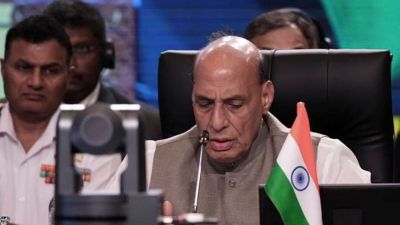God’s Own Dance
I SAT on my mother’s lap, transfixed. The warm light of the oil lamps (the only light used in those days) enhanced the effect of the Ka...

I SAT on my mother’s lap, transfixed. The warm light of the oil lamps (the only light used in those days) enhanced the effect of the Kathakali dancer’s eyes, his hand gestures, the rhythmic twitching and undulating of his body parts. It was an experience that I would go back to for the rest of my life. Now, even after making four documentaries on the performing arts of Kerala, every Kathakali performance that I see transports me to another world.
In the days that I was growing up in Adoor, Kerala, the sophisticated land-owning class kept Kathakali troupes in their houses. My family had patronised Kathakali for generations. It was an artistically-inclined family—the women learnt dance and music and a couple of my uncles were trained in painting. Performances were common. They would start after supper and continue through the night; the dancer-actor performing one story, usually from the Mahabharata, during the course of the night.
After I began making films, I felt the urge to document Kathakali and other dance forms because I wanted to show people outside Kerala the highly sophisticated levels of style and technique these local artistes had achieved. Apart from the performance itself, I wanted to show the rigour of preparation and discipline that goes into perfecting the art. The artistes are usually initiated into a troupe at the age of 10. They have to go through special oil massages and exercises so that their limbs are supple for the complex movements. The subject of my latest documentary, Kalamandalam Raman Kutty Nair, is in his eighties. He is a master of villainous roles—such as that of Ravana and Duryodhana—known as katthi (knife) roles because the face of the artiste is painted with knife-shaped patterns.
It was easier to research this documentary than my earlier ones on Krishnanatam and Kudiyattam—both dance forms performed in the temples of Kerala as offerings to god. Both are precursors of Kathakali. Unlike the Kabuki and Noh of Japan, which are also extremely esoteric dance forms rooted in myths, these dance forms have not received enough recognition even within India although they are about 2000 years old. Kathakali is more dramatic, accessible and easy to watch because a single performance normally tells one story. The other two span three to four days, performing parts of a story each day.
I’m often asked how my engagement with dance has shaped my own art—my feature films. There is no connection between the two. I’ve never even tried to analyse it. My film idiom is, in fact, far removed from the highly stylised idiom of these dance forms. There is no element of realism in a Kathakali performance; its sole purpose being to take the audience to the world that the actor-dancer is trying to portray. Perhaps the only way my passion for dance has influenced me is by making me more aware of my roots. I know the society that I’m a part of—which gave birth to these dance forms—infinitely better now.
There’s no end to this process. My next is on Mohiniattam.
(Adoor Gopalakrishnan’s Kalamandalam Raman Kutty Nair was screened at the London Film Festival last month)






- 01
- 02
- 03
- 04
- 05

























